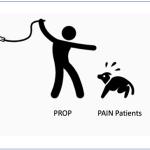As an unpaid healthcare writer and patient advocate, I’ve written for 27 years on opioid prescribing, pai
2016 CDC Guidelines
“Everybody knows” that America is undergoing a public health crisis in addiction and death involving opioids. Many media sources -- and even some medical doctors who should know better -- have attributed the causes of this crisis to “over-pr
America’s war on opioid prescribing continues unabated, predicated on the false assumption that opioid prescribing over the years caused a surge in addiction rates which in turn fueled a rise in the non‐medical use of opioids and an inc
Over the past several years, our government has taken control of doctors’ prescription pads.
#These comments have been officially submitted to the Federal Register.
Imagine spending a decade of your life dedicated to a malignant, fanatical cause only to have it unceremoniously crammed into the paper shredder by your successors.
Although it took four years, the American Medical Association's 202
It's too little and far too late, but the FDA appears to be acting to correct the ignorance and ineptitude that was shoved down the collective throats of America's pain patients in the form of the
Red Lawhern Ph.D., a healthcare writer and member of the ACSH Board of Advisors, has repeatedly demanded that CDC respond to their many critics who have pointed out that the 2016 US CDC guidelines on opioid prescribing to adults with chronic non-c












